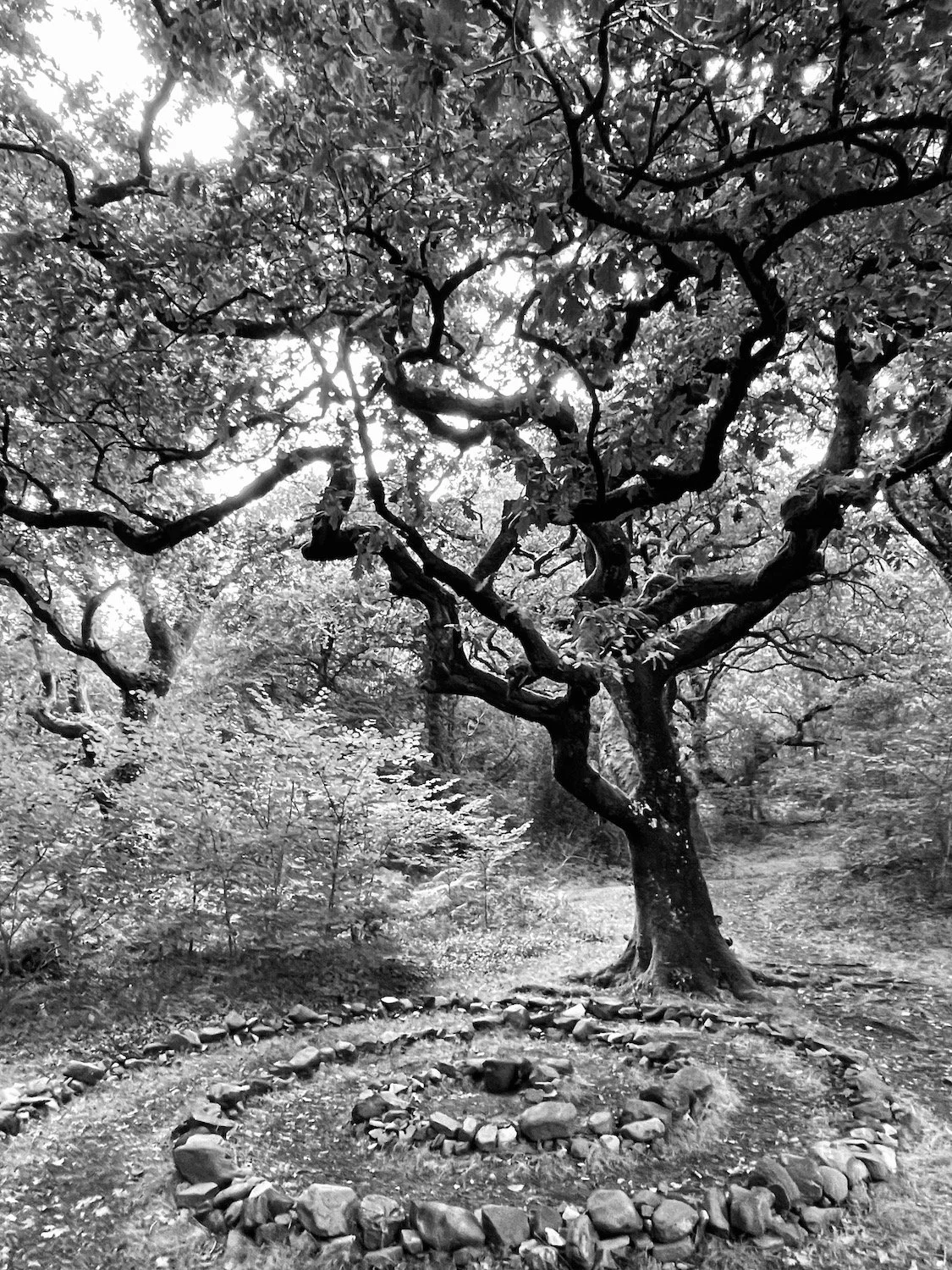Magic and Myth on Dartmoor
This year, Emma was invited to be one of the co-creators of the Magic and Myth exhibition at the Museum of Dartmoor Life in Okehampton. Read her article below to explore Dartmoor’s rich folklore—from shapeshifting witches to ghostly hounds—and discover how these stories shape the landscape and inspire her new book, Dartmoor Myths and Legends.
Magic and myths abound on Dartmoor – dragons at the O’Brook, Eyelsbarrow, and Becka Brook; shapeshifting witches at Dendles Wood, Bowerman’s Nose and Hound Tor; giants at Mardon Down, Drizzlecombe, and Dinger Tor; pixies at Black-a-tor Copse, Black Tor Rings, and Bellever; the wild hunt led by the devil with his dogs at Wistman’s Wood and Dewerstone; King Arthur at Helstone and Blackingstone Rock; and of course ghostly happenings across the moor such as the hairy hands, and Lady Howard and her coach of bones haunting the old route between Tavistock and Okehampton.
Dartmoor has been called a mythic landscape shaped by natural forces over millennia, and human hands since at least the Mesolithic era. It’s not hard to imagine how stories might have been inspired by this interrelationship of humans with the raw majesty of granite tors, undulating hills, wooded river valleys, and ancient stone monuments that can quickly be enveloped in thick mists.
It’s hard to know how old the tales are (some are likely Victorian inventions), and yet this potent oral tradition continues to be passed down through the generations. As children, our mother used to tell us these tales when we visited different places on the Moor. Similar to storytelling traditions around the world, there are different categories such as origin stories, warning accounts, or teaching anecdotes. I am particularly interested in the origin or inspiration of each because, as far-fetched as they often seem, there is usually a tiny grain of truth within each one…and sometimes real people or incidents.
Growing up I knew of the local wart and ring-worm charmers, a tarot reader, and witches practising magic in a nearby woodland. Gifts of insight, knowledge and rituals were often inherited and/or passed down through families. Usually no charge was made although leaving a gift of food or drink was very welcome. Often these people were living below the breadline, scraping by financially, or isolated. Most Dartmoor myths tell of women who were old and wicked but this twisted truth stems from the medieval witch-hunts, and has been rife for centuries. Instead these indigenous wisdom-keepers were likely community mid-wives and herbalists working with the natural effects of weather changes, moon cycles, and seasonal plants. And there are some wonderful women (and men) practicing the old ways today.
I was lucky enough to grow up instilled with an appreciation of mystery and magic. ‘Dartmoor’s Daughter’ was established as a way to bridge the gap between conventional thinking and beyond ordinary understanding. Walks tend to be immersive and experiential rather than a route march with lots of social chat. People often report a greater sense of wellbeing afterwards as well as a deeper understanding of this extraordinary living, working landscape.
Want to dive deeper into Dartmoor’s rich folklore?
Discover more tales of dragons, witches, giants, and ghostly goings-on in my new book, Dartmoor Myths and Legends: Exploring Origins and Inspirations. Rooted in place and story, it’s perfect for curious minds, wild-hearted wanderers, and those who feel the magic of the moor.



